John Hurrell – 17 May, 2024
Whilst long classifying lists of wild and domestic cat-types are provided in two large rectangular wall charts, and one video monitor revels in open ‘feral' mouths flaunting menacing piercing teeth, Seymour's main thrust is to present parallels with ‘gentler' humans, using sporadic labels such as “motherhood”, “awakening”, “adolescence”, “maturity” and “courtship”. A very large proportion of the walled images are fluffy, cute and sweet, downplaying the beastly destructive side of feline attributes detectable in the monitor photographs and playing up to conventional popular perceptions of these pets.
Titirangi
Ava Seymour
Domestic Wild
Curated by James Gatt
9 March - 26 May 2024
In an art community where esoteric, contentious and deliberately obtuse subject matter for debate proliferates, Domestic Wild is an oddly accessible exhibition that celebrates Ava Seymour’s lifelong adoration of cats, a fascinating emotional statement (occasionally involving her passion for collage, revealing torn as well as cut edges, and cat-patterned wallpaper) that goes far beyond any mere clever-dickie uber-intellectual exercise. Many of the obsessively researched found photograph and collage presentations noted in her CV revolve around these creatures, and while such practices ostensibly might seem solely focussed on generic categories and obsessive collecting, they are also a whole lot more.
I myself come from a Christchurch family of vehement feline-haters, and personally am a lover of birds and reptiles, but where I’m living at the moment in Auckland means I am often visited by my two neighbours’ cats—Roo and Max—who regularly try and get inside my flat to explore if I accidentally leave the back door open, and who always make eye contact if I’m sitting close to my porch’s French doors when they saunter past outside. They are disarmingly confident, curious and cheeky. Often petulant and snooty too.
Seymour’s image survey (based on past shows and her research archives) is bodily immersive, but not claustrophobic, with over a hundred found photographic cat faces and bodies throughout. These are often positioned high on the walls—most framed, in pairs, and under glass—or in sequences on three monitors. Mingled with these are six pinned up, spread-out, plain cardboard covers of cat books, and nine carefully positioned, vertical colour charts to match considered adjacent fur, eye-colour or photographic backdrop.
Sometimes we see them from behind, or side profile, but mostly it is frontal views of heads where eyes and mouths are emphasised. Of almost ninety images, most are black and white. About fifteen are in colour.
Whilst long classifying lists of wild and domestic cat-types are provided in two large rectangular wall charts, and one video monitor revels in open ‘feral’ mouths flaunting menacing piercing teeth, Seymour’s main thrust is to present parallels with ‘gentler’ humans, using sporadic labels such as “motherhood”, “awakening”, “adolescence”, “maturity” and “courtship”. A very large proportion of the walled images are fluffy, cute and sweet, downplaying the beastly destructive side of feline attributes detectable in the monitor photographs and playing up to conventional popular perceptions of these pets. The only time human and cat attributes really overlap (in a somewhat droll, amusing pronounced manner) is with two truncated ‘Pussycat Club’ texts from tabloids, referring to uber-friendly, temporary-companion-seeking nightclub hostesses.
There is a lot of artistic cunning here. For example, Seymour often uses the textural and patterning ambiguity of longhaired cats to make us look twice at these ‘readymade’ images, because often they initially appear to be collages when they are not. You look for the edge of the cut or the layered overlap, but they are not present. Nature is mimicking artifice. Genetic coincidence emulates contrived intervention.
One obvious point is that photographed cats found in printed media (which Seymour happily samples) tend to be represented as solitary individuals, but cats in fact are quite social animals, and are often encountered outside in groups. Though less overt than dogs in enthusiastic greeting, they seem even more gregarious in terms of ‘hanging out’ and relaxing, especially when lying around on warm concrete, absorbing the pleasurable heat from the sun.
This communal aspect though is downplayed, focussing instead on what it is that creates character, individuality or personality; qualities that underscore the unique nature of the solo feline.
Curiously, in her published interview with James Gatt, Seymour says this exhibition is really about other subject matters, not cats. Certainly, as I’ve pointed out, parallel human behaviour comes to mind, including the artist’s own qualities like collecting and hoarding—the two types of mammalian mind merge so effortlessly, it is very hard to pry them apart by analysing what is naturally ‘intrinsic’ and what is a trope—assuming the distinctions can be easily made apparent. This intriguing show delights in such blurring.
John Hurrell
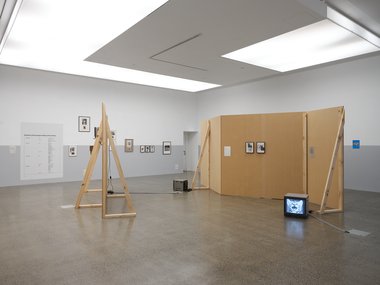


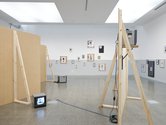

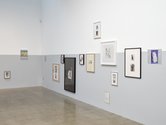
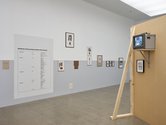



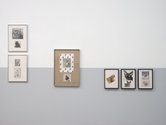
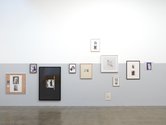
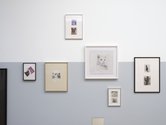
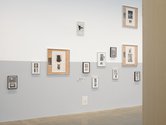
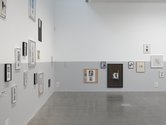

 Advertising in this column
Advertising in this column Two Rooms presents a program of residencies and projects
Two Rooms presents a program of residencies and projects

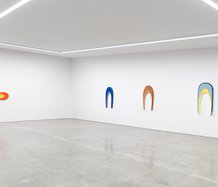
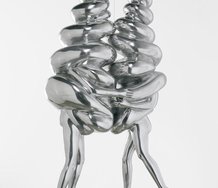
This Discussion has 0 comments.
Comment
Participate
Register to Participate.
Sign in
Sign in to an existing account.